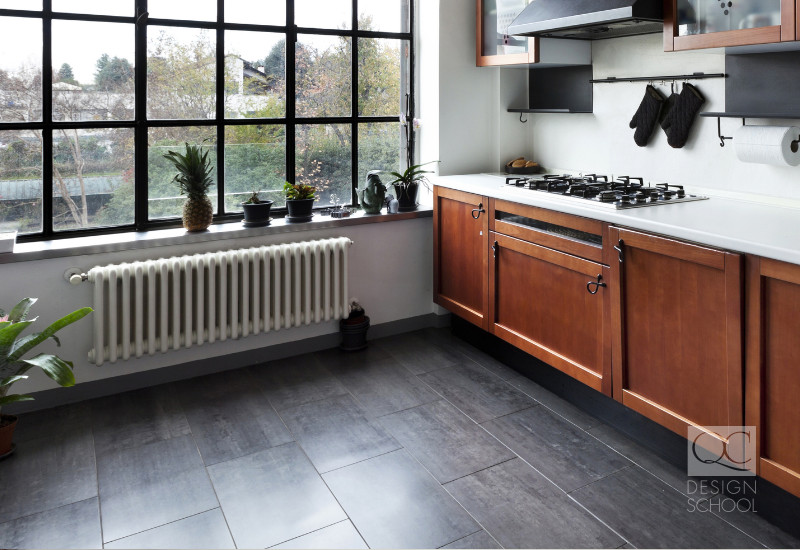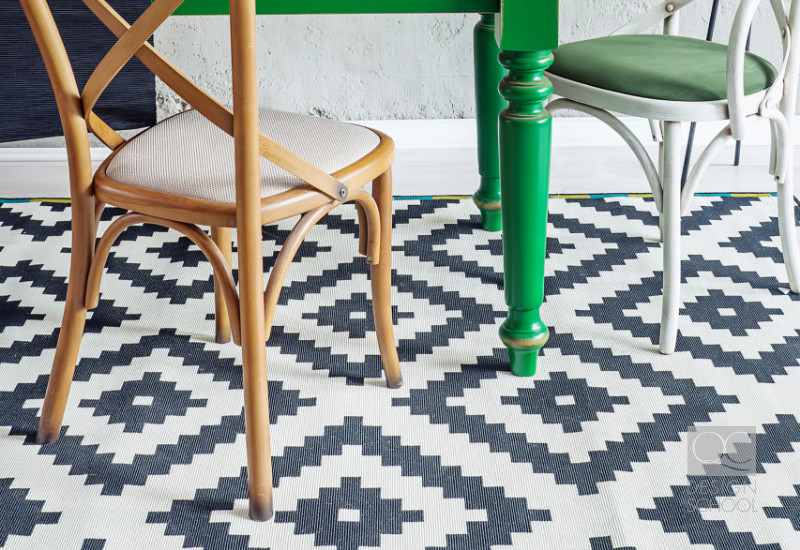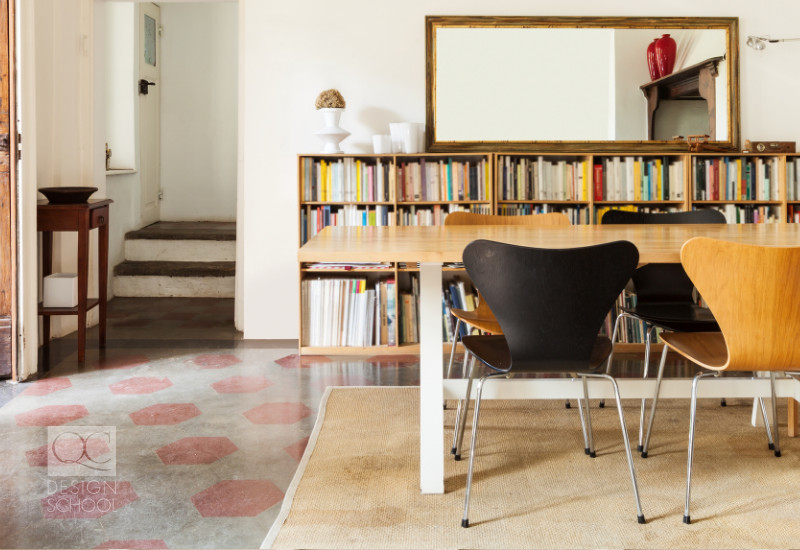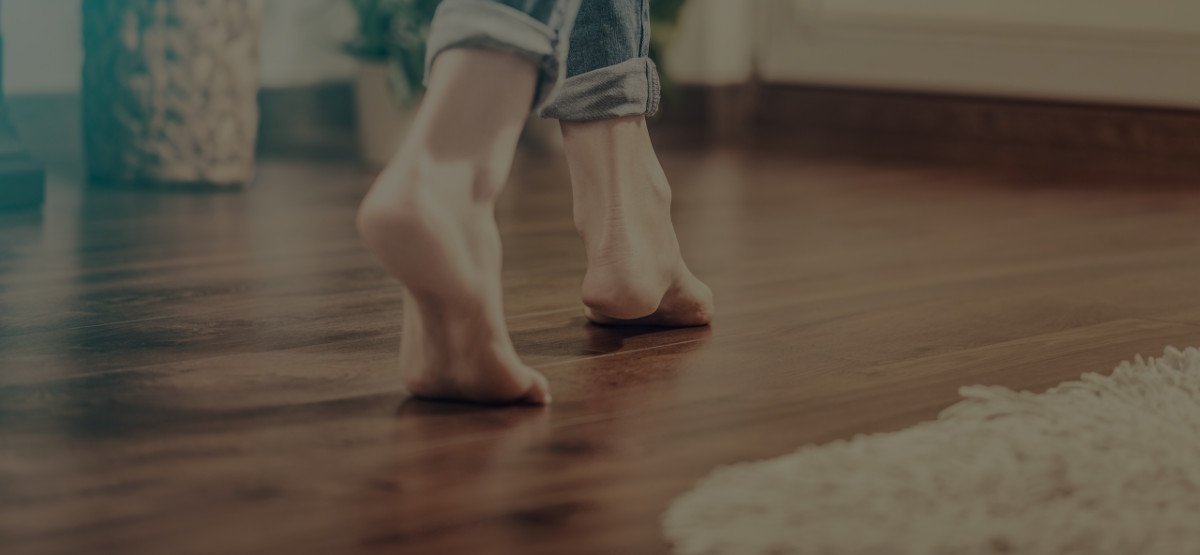It’s not just for luxury clients! Just as the accent wall had its time in the spotlight, we believe that statement flooring deserves your attention. In case you’re not aware, statement flooring is when the floor receives ample attention when it comes to decorating.
In your interior decorating certification training, you probably only learned about flooring materials in regards to their basic function. The floor used to be thought of as the blank canvas upon which you place decorative décor, but no more!
Patterned tiles or painted wooden panels add character to a space. Use décor and furniture styles to complement the stylized floors or have it really pop as the center of attention in a room. It’s all up to your creativity!
Curious to learn more? Keep reading!

Functionality first!
Statement flooring can absolutely transform a room. While we are absolutely loving this trend, we can also agree that it may not be suitable for every room of every home. Before considering aesthetics, focus on selecting materials that suit your clients’ lifestyle. Making it functional, durable, and safe should be your first priority. Are they active? Do they work from home? Are they planning on installing a home theatre? All these considerations will affect the purpose and use of many rooms in a home.
In the example of a home theatre, avoid hardwood or ceramic tiles. Even though we can think of a number of ways to use colorful tiles to brighten up the space, it would be counterproductive to the room’s purpose. In a space where great acoustics is key, why use flooring that would mess it all up? The floors would bounce sound endlessly all around the room. The resulting effect? An awful movie-watching experience!
What’s their style?
Assessing functionality of a room is easy. You know what the bathroom and kitchen are used for. But any spare rooms or basements can have multiple potential functions. From guest bedrooms to craft rooms or a home gym, ensure you consult your clients about each room’s ultimate goal.
Once you have an idea of what your clients want, figure out their decorating style preferences. Over time, certain design materials have become associated with different decorating styles. Distressed and unfinished wood are often highlights of a country-style home. Meanwhile, glass and sleek metals feature heavily in contemporary-style residences.
If you have an offbeat client, you can absolutely break these rules! Besides flooring, you’ll want to find unique home décor to pull it all together. Your creativity is what your interior decorating certification attests to, after all!

Statement flooring ideas:
Now for the fun part! From the color choice to the pattern to the surface finish, everything is customizable! We’ve seen some showstopping porcelain floors or tiles than transition into wood. Keep reading to find out how to use these traditional materials in trendy statement flooring!
Budget-friendly wood
Love using natural woods? Us, too! With the green design movement, natural materials are having a heyday! Hardwood is an obvious choice, but your clients may not have the money to redo their entire house with this expensive material.
If they want to decorate a low-traffic area, consider softwood. Pine is a fine example. It’s cheap, takes finishes well, and suits a wide range of styles. Wide-plank pine is commonly used in Scandinavian style homes in light finishes to reflect natural light around the room. The downside is that due to its softness, its durability takes a hit.
You could also look into engineered hardwood. This flooring material consists of a hard, durable plywood base with a solid wood top layer. This top layer gives it the appearance of solid hardwood while saving your clients a pretty penny.
Terrazzo
For the unfamiliar, terrazzo consists of marble ground down into chips and mixed with cement and epoxies. The mixture is applied over another surface, and once dry, it’s ground down and polished to reveal a mosaic-like appearance. In the ‘70s, this stone-based design option was incredibly popular in commercial and public areas. However, we’ve seen a revival of this pattern in modern homes. Thicker chunks and isolated areas can allow this flooring option to create visual interest without looking outdated.
Brick
Wait, what? You’re probably imagining the sturdy brown brick used to construct all the houses on your block. But it actually has a long history in the interiors of traditional- and classic-style homes. And don’t forget about the exposed brick walls seen in industrial-chic lofts!
Flooring bricks are studier and more durable than the common brick walls you see in industrial buildings. They’re fired at extremely high temperatures so their hardness allows them to resist moisture and abrasion. Some sunrooms use brick floors to absorb heat during the day and release it back at night. If you’re not sure where you can possibly use it, these floors look best in informal country-style rooms.

Tiles
Let’s face it: tiles can be pretty boring. Because we usually use them in wet areas like the kitchen and bathroom, we tend to think of them as just functional materials. But tiles can come in a variety of forms. Terracotta, porcelain, marble… just to name a few!
Decorative tiles inject loads of character into a space but can be visually overwhelming when used wrong. You may consider alternating decorative tiles with plain field tiles. It’ll allow your clients to transform their space on a modest budget. They’ll also have the freedom to decide how much of the zany patterns they’re comfortable with incorporating.
Don’t forget the decorative rug!
Just as you can mix patterns in fashion, don’t shy away from mixing your textiles! A great rug anchors the furniture atop the floors and can warm up your feet. Especially in spaces like the living room, a rug is essential. Use a rug as a piece of art to tie in the themes and colors of the other décor. The flooring underneath will serve as a decorative frame to the large rug. Or, repeat the patterns and textures found in the flooring materials in your textiles.
We don’t recommend implementing a genuine zebra-skin rug—it’s still tacky! But your choices are otherwise endless. Rugs come in all sorts of shapes, sizes, and materials. Whether your clients love the luxe, faux-fur rug or the hand-made macramé rug, there’s something for everyone.
Seen any gorgeous statement floors around the web? Share it with us in a comment!
